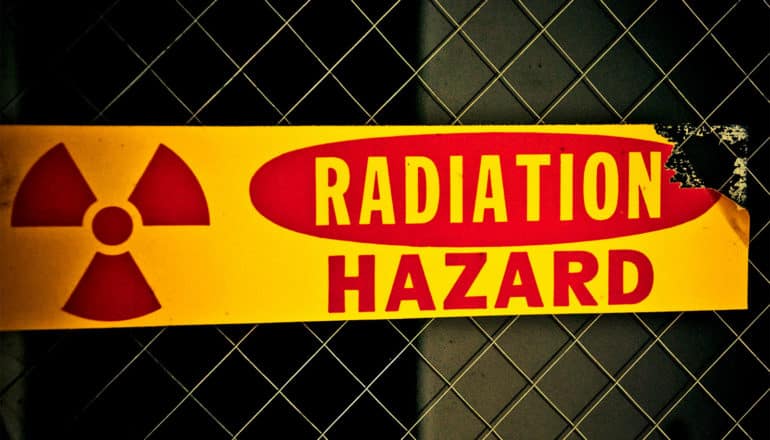
For decades, scientists suspected that bacteria known as Geobacter could clean up radioactive uranium waste, but it wasn’t clear how the microbes did it.
“The biological mechanism of how they were doing this remained elusive for 20 years,” says Gemma Reguera, a microbiologist whose team solved that mystery 10 years ago. Well, three-quarters of the mystery. She’s now cracked the rest of the case.
What Reguera discovered in 2011 was that, on one side of their cells, the Geobacter make protein filaments that act like little wires to literally zap uranium. This does two things. For one, the jolt triggers chemical reactions that give the bacteria energy.
Secondly, that chemistry traps the uranium in a mineral form, preventing the radioactive material from spreading through the environment.
But those protein wires accounted for just about 75% of the uranium that the Geobacter were cleaning up.
“We always knew we were missing something,” says Reguera, a professor of microbiology and molecular genetics in the College of Natural Science at Michigan State University. “What we didn’t know was what was happening at the cell surface, particularly on the side of the cell that had no wires to immobilize the uranium.”
Cracking the Geobacter case
Now, Reguera’s team has the answer. Molecules called lipopolysaccharides coat the cell surface and soak up the uranium like a sponge.
This finding could create new ways not only to remediate dangerous pollution, but also to recycle and reclaim increasingly scarce metals from electronics waste. The next step, Reguera says, is investigating whether the Geobacter and their sponges can be encouraged to pull other toxic metals from waste streams.
“We can ask whether we can make a system for the selective removal of metals,” Reguera says. It would work kind of like a fermenter, where respiring microscopic yeast cells make alcohol, only here, the respiration of Geobacter bacteria would trap toxic and important metals using protein nanowires and the newly discovered molecular sponges.
As the Geobacter soak up uranium, they also start packaging it into vesicles, which are bubble-like orbs coated with the lipopolysaccharides. The bacterial cells release the vesicles and replenish their lipopolysaccharide coating to sop up more uranium.
“It’s a mechanism to remodel the cell surface and ensure maximum protection. The cells produce some vesicles under normal growth conditions but increase production to get rid of the trapped uranium. We are now investigating how to scale up vesicle production,” Reguera says. “We could essentially make a factory for these vesicles to pull metals out of water.”
How they solved the mystery
For Reguera, how this discovery was made is as exciting as the discovery itself. Her team’s protein wire finding in 2011 was published toward the end of the project’s funding. Starting up a new investigation into what happened to the other 25% of uranium the Geobacter soaked up would take time.
Fortunately, there was an undergraduate researcher on Reguera’s team, Michael Paxhia, who continued the project. Two graduate students, Michael Manzella and Jenna Young, were so intrigued by the problem that they mentored Paxhia while working on their separate projects.
Without formal funding from a major agency, the trio identified the genes responsible for making Geobacter’s special lipopolysaccharides. Furthermore, if those genes weren’t working right, that would let uranium into cells, killing the bacteria.
These lab members have since graduated: Paxhia is a postdoctoral researcher in the UK, Manzella is a biology lecturer at Indiana University-Bloomington, and Young is the cofounder and lead scientist at Fraser Valley Distilling in Colorado. But their work built the foundation for current doctoral student Morgen Clark. Clark’s research, which is now supported by the National Science Foundation, completed the puzzle, showing that Geobacter soaked up the uranium with the lipopolysaccharide sponge and packed it into vesicles.
“This is a story led by incredibly skilled, highly motivated students,” Reguera says. “I can’t tell you how proud I am.”
The research appears in Applied and Environmental Microbiology.
Source: Michigan State University
The post Team solves mystery of how bacteria clean up radioactive waste appeared first on Futurity.
from Futurity https://ift.tt/3yUhrr0
No comments:
Post a Comment